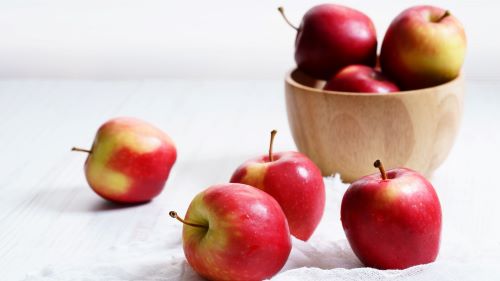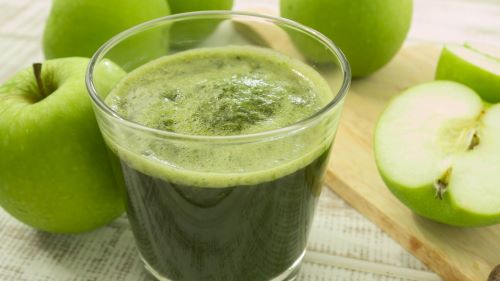
Juicing is an excellent way to get all the essential nutrients in your diet, and apples are one of the best fruits for juicing. They're sweet, flavorful, and loaded with vitamins and minerals. However, have you ever wondered which apple variety is better for juicing - Green or Red?
In this blog post, we will explore the nutritional differences between green and red apples, their sugar and fiber content, impact on blood sugar levels and their suitability for diabetics. Despite common misconceptions, juicing is NOT Off-Limits for Diabetics! Neither does it lead to diabetes.
I have been drinking 500 ml of juice a day for 20 years, including green apples. The secret lies in choosing the right combination and type of fruit and vegetables to control the sugar content.
Norman W. Walker was a pioneer in the field of natural health and nutrition, particularly known for his work on juicing and raw foods. He believed in the therapeutic benefits of fresh fruits and vegetables and advocated for their consumption in the form of juices for better health. However, Walker actually doesn't explicitly compare red and green apples for juicing in his works. Nevertheless, Walker advocated for mindful choices regarding sugar intake, especially for those with diabetes or blood sugar concerns. Given the lower sugar content and Glycemic Index of green apples, they would better align with his recommendations in this regard.
Red Apples: What Makes them Juicing Contenders
Red apples are higher in antioxidants like quercetin and beta-carotene, associated with cell protection and reduced risk of chronic diseases. They are rich in vitamin C, important for immune function and collagen production. They are sweeter and more palatable for some.
When it comes to juicing, red apples are a top contender for several reasons. Their high antioxidant and polyphenol content contributes to overall health. The natural sweetness of red apples enhances the flavor of juices, while their rich red pigment adds a vibrant color. Additionally, their pectin content promotes digestion and gut health.

Considerations for diabetics
- Sugar content: Red apples generally have higher sugar content than green apples. This raises concerns about potential blood sugar spikes in diabetics.
- Fiber content: They have lower fiber content than green apples. Fiber helps slow down sugar absorption, making green apples preferable for diabetics.
- Glycemic index: Red apples tend to have a higher glycemic index (GI) than green apples). Higher GI indicates a faster rise in blood sugar, making green apples a better choice for diabetics.
Green Apples: What Makes Them Juicing Favorites
Green apples have lower sugar absorption due to higher fiber content. They may help with blood sugar control due to lower GI. They are a good source of vitamins A and K, contributing to eye health and bone health. Green apples are tangy and tart flavor preferred by some.
When it comes to juicing, green apples pack a punch with higher nutrient concentrations like Vitamin C and antioxidants. Their tartness adds a refreshing flavor to juices and smoothies, while their lower sugar content makes them ideal for calorie-conscious individuals. Additionally, the acidity in green apples helps balance out sweeter fruits in juice blends, adding a natural preservative effect.

Considerations for diabetics
- Sugar content: Green apples generally contain less sugar than red apples.
- Fiber content: They tend to have slightly more fiber than red apples, which helps slow down sugar absorption and prevent blood sugar spikes.
- Glycemic index: Green apples generally have a lower glycemic index (GI) than red apples, meaning they cause a smaller and slower rise in blood sugar.
How the diabetes factor Influences the Apple Juicing Choice
When managing diabetes, choosing the right apple for juicing is crucial. Green apple juice, with its lower sugar content, may be a better option for individuals with diabetes. Its lower glycemic index results in a slower rise in blood sugar levels. For those managing their blood sugar levels, consuming green apple juice in moderation can be part of a balanced diet. It offers a flavorful, lower-sugar alternative while providing a refreshing way to increase fruit intake without causing drastic spikes in blood sugar levels.
When considering red apple juice, it's important to note its moderate glycemic index. Mindful consumption and portion control are key for managing blood sugar levels. Understanding the glycemic impact provides insight into incorporating red apple juice into a balanced diet. It offers a delicious way to enjoy fruit while being mindful of glycemic impact.
My Daily Juicing Regime
My daily juice routine includes different categories of fruit and vegetables! Focusing on carrots, greens and refreshing fruits provides a variety of beneficial nutrients and flavors.
- Carrot-based: Carrots are rich in beta-carotene, which converts to vitamin A, crucial for vision and immune function. They also add natural sweetness and earthy notes to your blends.
- Green-based: Leafy greens like spinach or kale are powerhouse nutrients, providing vitamins, minerals, and antioxidants. They can help alkalize your body and balance the sweetness of fruits.
- Refreshing fruit-based: Fruits like berries, melons, or citrus fruits offer additional vitamins, minerals, and electrolytes. They add a juicy texture and bright, refreshing flavors to your juices.
Green Apples vs Red Apples: The Juicing Battle
My verdict is:
- Juicing: Choose green apples for lower sugar, higher fiber, and a lower GI.
- Eating: Choose red apples for their sweetness, crispness, and variety of flavors.
